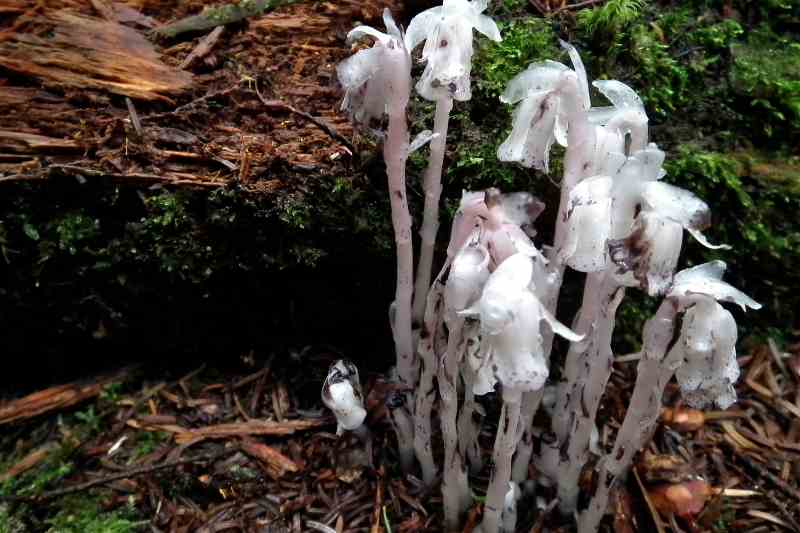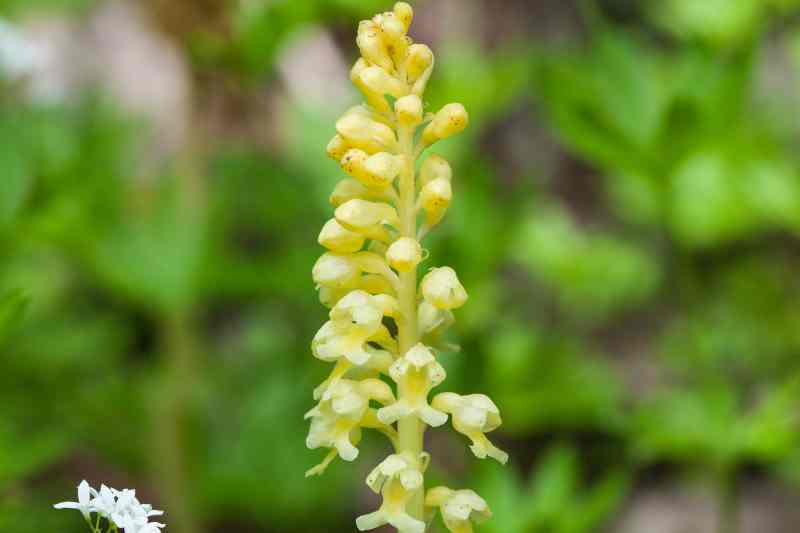Albino plants, with their immaculate appearance and lack of green pigment, captivate with their uniqueness as much as they intrigue. Why do some plants arise without chlorophyll, and how do they manage – or fail – to survive? Between genetic mystery and conservation challenges, these botanical curiosities offer us a fascinating window into the limits and adaptations of life. In this article, we will explore their origins, their unique functioning, and the issues related to their preservation.
What is an albino plant?
Albino plants are vegetals exhibiting a total or partial absence of chlorophyll, the green pigment that plays an essential role in photosynthesis. This pigment is crucial for capturing sunlight energy and converting it into chemical energy, allowing the plant to produce the sugars necessary for its growth: this is photosynthesis. Without chlorophyll, these plants find themselves unable to produce their own food (or at least partially), which poses significant challenges for their survival.
Appearance and characteristics
- White or translucent leaves and stems: the absence of chlorophyll gives albino plants a striking white or slightly translucent appearance, as other natural pigments (such as carotenoids or anthocyanins) may also be absent or greatly reduced.
- Leaves tinged with yellow or pale pink: in some cases, albino plants retain a small amount of other pigments that give them a slightly different coloration, such as shades of yellow or pink.
- Limited or non-existent growth: most albino plants die shortly after germination, as they cannot produce the energy necessary for development.

Comparison with albinism in animals
Albinism in plants and animals shares similarities, notably a genetic mutation affecting pigment production. However, the impacts of this condition differ significantly.
- In animals, the absence of melanin (the pigment responsible for skin, fur, or feather colour) leads to increased sensitivity to sunlight and camouflage issues, but they can generally survive.
- In plants, albinism is far more debilitating: without chlorophyll, an albino plant cannot perform photosynthesis, which directly compromises its ability to survive.
Prevalence in nature: an exceptional case
Albinism is an extremely rare phenomenon in the plant kingdom. Indeed, for a plant to become albino, it requires:
- A specific genetic mutation affecting the genes responsible for chlorophyll production.
- That this mutation is not immediately fatal during germination.
In nature, natural selection quickly eliminates albino plants, as they cannot develop independently.
The causes of albinism in plants
Genetic origin
Plant albinism is often linked to mutations in the genes responsible for chlorophyll synthesis. These mutations prevent the plant from producing this essential green pigment, resulting in a lack of coloration and an inability to perform photosynthesis.
- Genetic mutation: an alteration in the genes coding for the enzymes necessary for chlorophyll production leads to a total or partial absence of this pigment. These mutations can occur spontaneously or be inherited from parents.
- Specific cross-breeding cases: in certain species, genetic crossings between individuals carrying recessive mutations can give rise to albino plants. For example, in nurseries or hybridization projects, it is not uncommon to observe albino seedlings among varieties of vegetables, fruit trees, or orchids. However, these plants often survive only a very short time without human assistance.
Environmental factors
In addition to genetic mutations, external elements can also influence plant pigmentation.
- Environmental stress: extreme conditions, such as sudden temperature changes, excessive light exposure, or prolonged drought, can disrupt chlorophyll production processes. These conditions do not cause true genetic albinism but can lead to a temporary reduction in pigmentation.
- Diseases and pathogens: certain fungal or bacterial infections can alter the health of the plant and lead to leaf discolouration, mimicking the effect of albinism.
- Exposure to chemicals: certain weedkillers, pesticides, or pollutants can disrupt the biological mechanisms of plants and inhibit chlorophyll synthesis. These chemical impacts can cause temporary or permanent loss of pigmentation.
The consequences of albinism in plants
As mentioned earlier, albinism has major consequences for plants, as the absence of chlorophyll deprives them of their ability to perform photosynthesis. This incapacity places them in a situation of great vulnerability. Many albino plants die quickly after germination, unable to meet their energy needs. However, in some cases, they can rely on a "mother plant" or shared root systems for nourishment. This is the case for albino sequoias, which depend entirely on nutrients transferred by the roots of normal trees to survive, unlike normal plants, which can thrive due to their autonomy.
There are, however, notable exceptions. Some specific albino plants, such as Monotropa uniflora (the "ghost plant" or Indian pipe), circumvent their dependence on photosynthesis by establishing a symbiosis with mycorrhizal fungi. These fungi provide them with the necessary nutrients by tapping into the underground network of surrounding plants. This type of relationship, called mycoheterotrophy, allows these albino plants to survive and thrive despite their pigmentation defect.
This energy dependence of so-called albino plants on other plants or organisms, combined with the fragility of their state, makes their preservation difficult, especially in nature where habitat destruction further exacerbates their vulnerability.
However, these challenges come with interesting opportunities, particularly in the field of scientific research. Albino plants intrigue researchers seeking to better understand the genetic mutations responsible for their condition and their impact on plant metabolism. In horticulture, efforts are being made to maintain or even "save" certain albino varieties, for example, by using techniques such as controlled environment cultivation.
Famous examples of albino plants
Albino sequoias are probably the most fascinating examples of albino plants in nature. These rare trees, primarily located in California, survive thanks to a unique system of shared roots with normal sequoias. This underground network allows them to absorb the nutrients necessary for their survival, a dependency strategy that intrigues botanists and symbolises the interconnectedness of ecosystems.
In the horticultural world, partially albino plants, such as certain varieties of philodendrons, like Monstera deliciosa 'Variegata', have become extremely sought after. Their unique appearance, with marbled white or cream leaves, makes them prized objects for enthusiasts of slightly unusual tropical plants.
But, even within our flora, albino plants can be found. One of the most well-known cases is that of the bird's-nest orchid (Neottia nidus-avis), a European orchid devoid of chlorophyll. Like the Indian pipe, this plant derives its energy from the decomposition of organic matter in the soil, thanks to an association with mycorrhizal fungi.

Some tips on growing albino houseplants
Growing albino plants, or partially albino varieties, requires special attention. These plants should be placed in a bright environment, but especially without direct sunlight, to avoid burning the white parts of their leaves, which are particularly sensitive. Their metabolism being less efficient, they also require rich, well-drained soil, as well as appropriate fertilization to compensate for their reduced ability to produce energy.
In an ethical approach, it is also essential to respect their natural conservation. For enthusiasts, this means avoiding the collection of albino specimens from their natural habitat, as they are rare and vulnerable.
































Comments